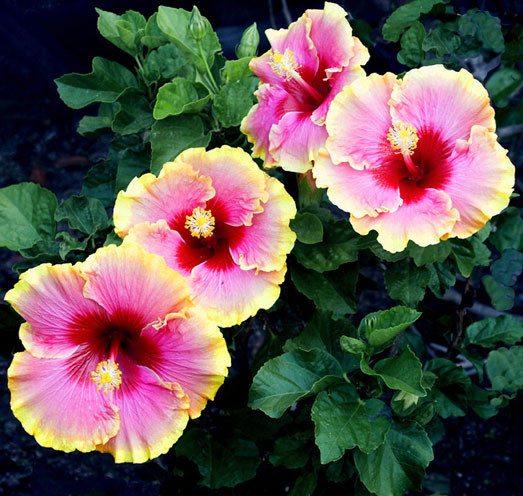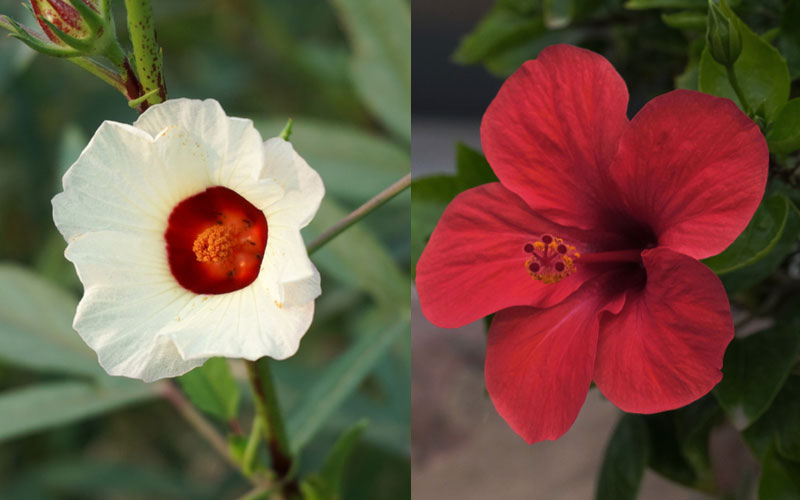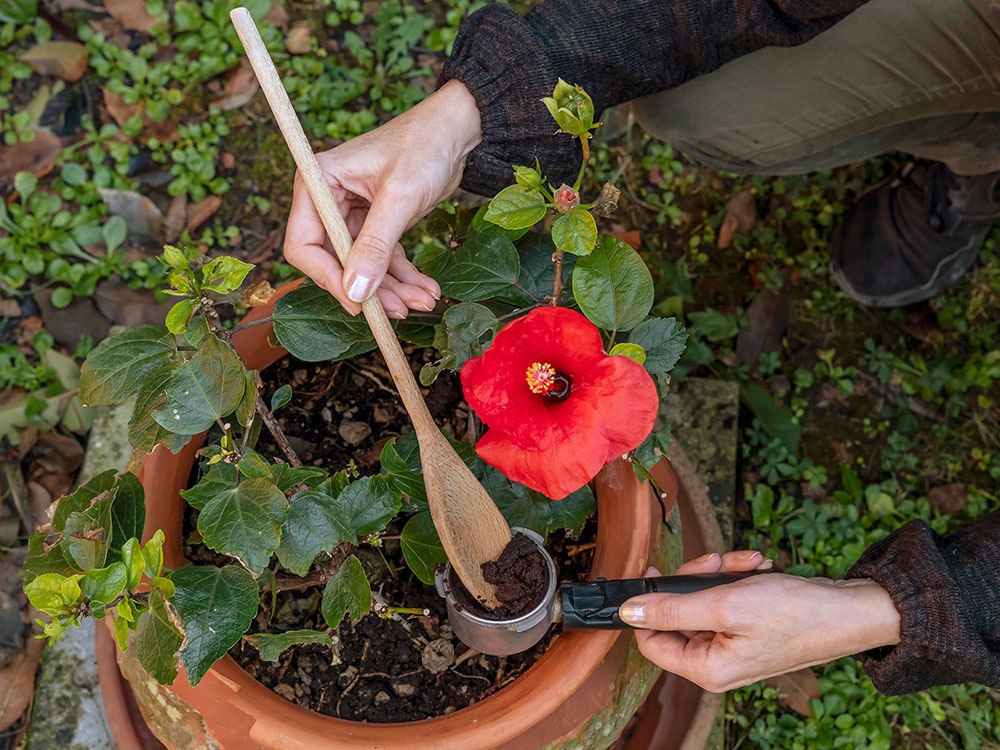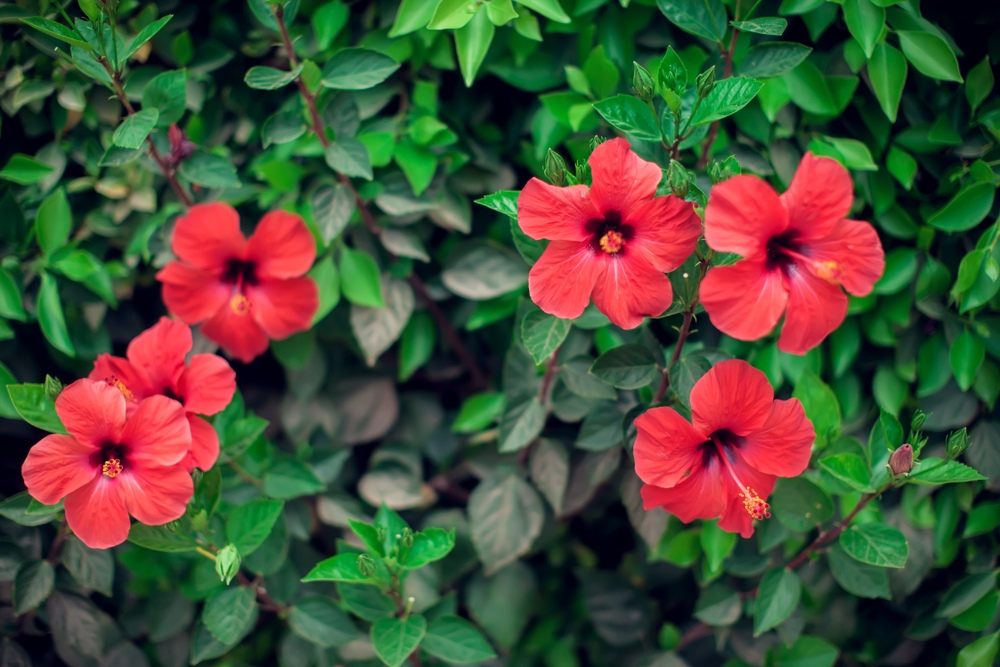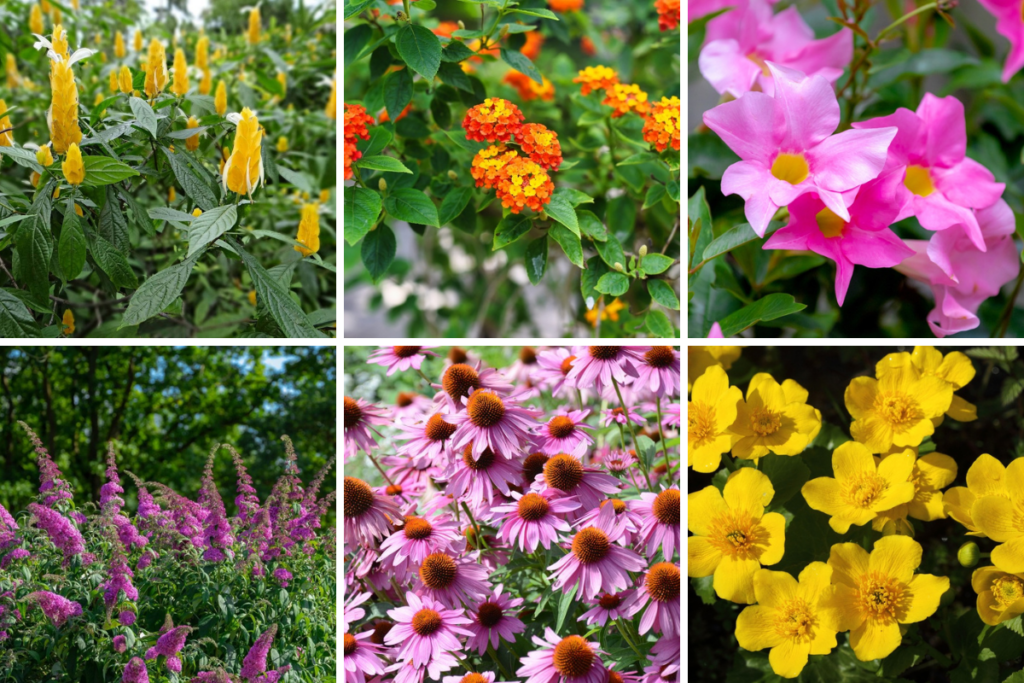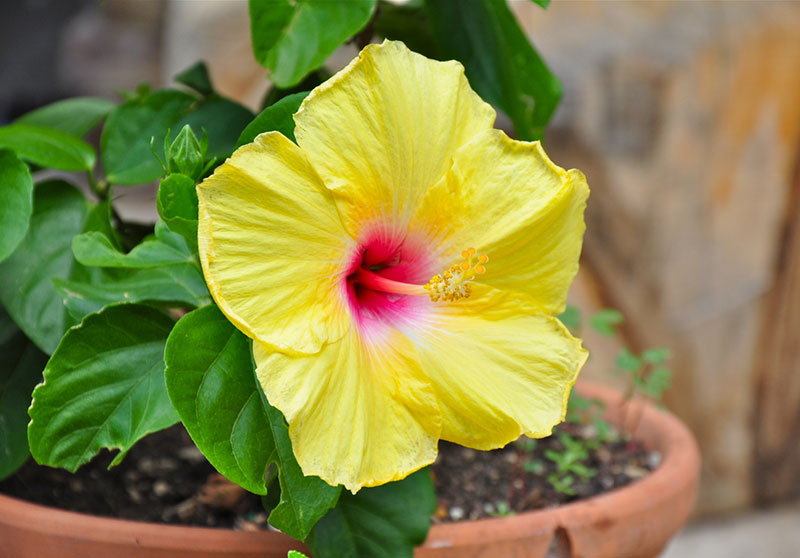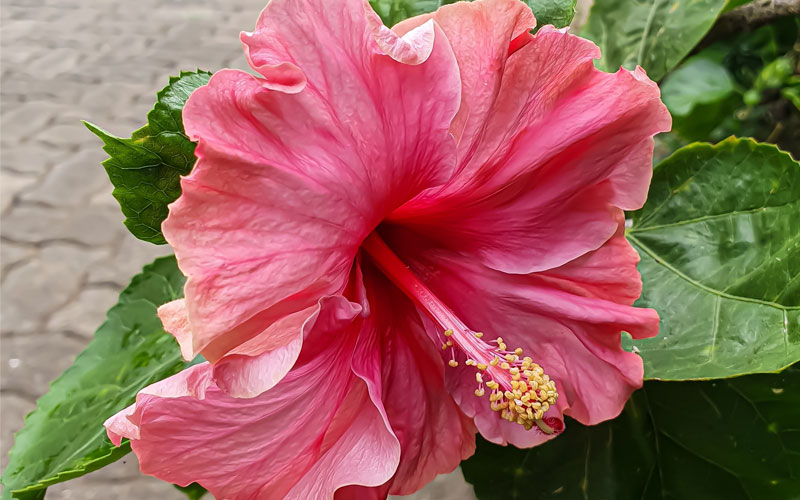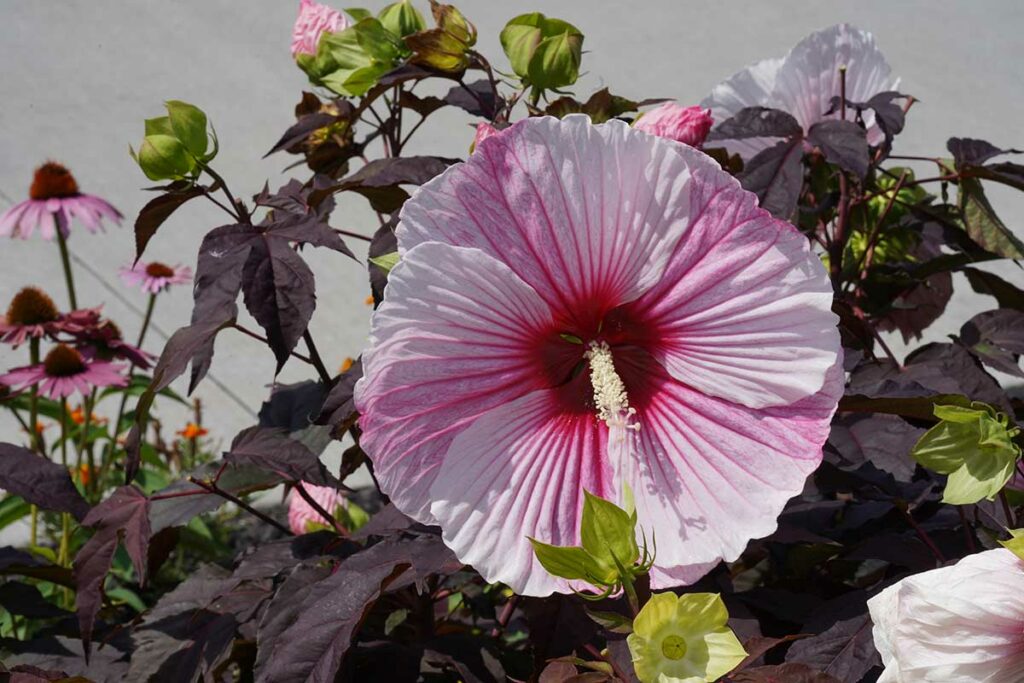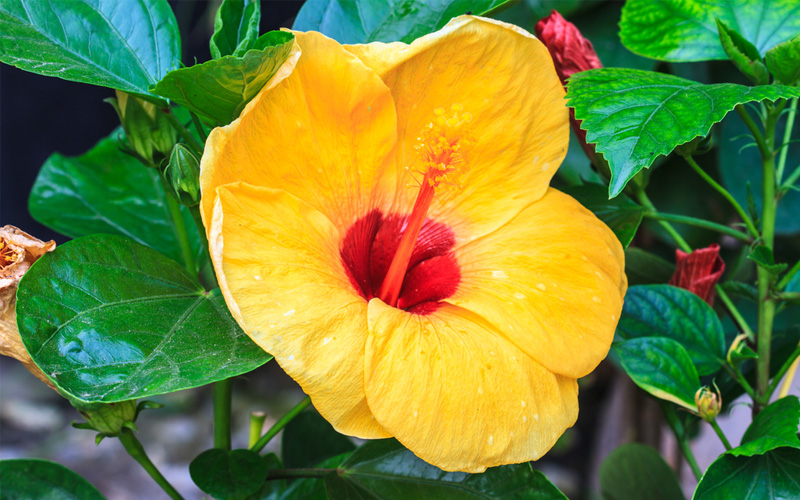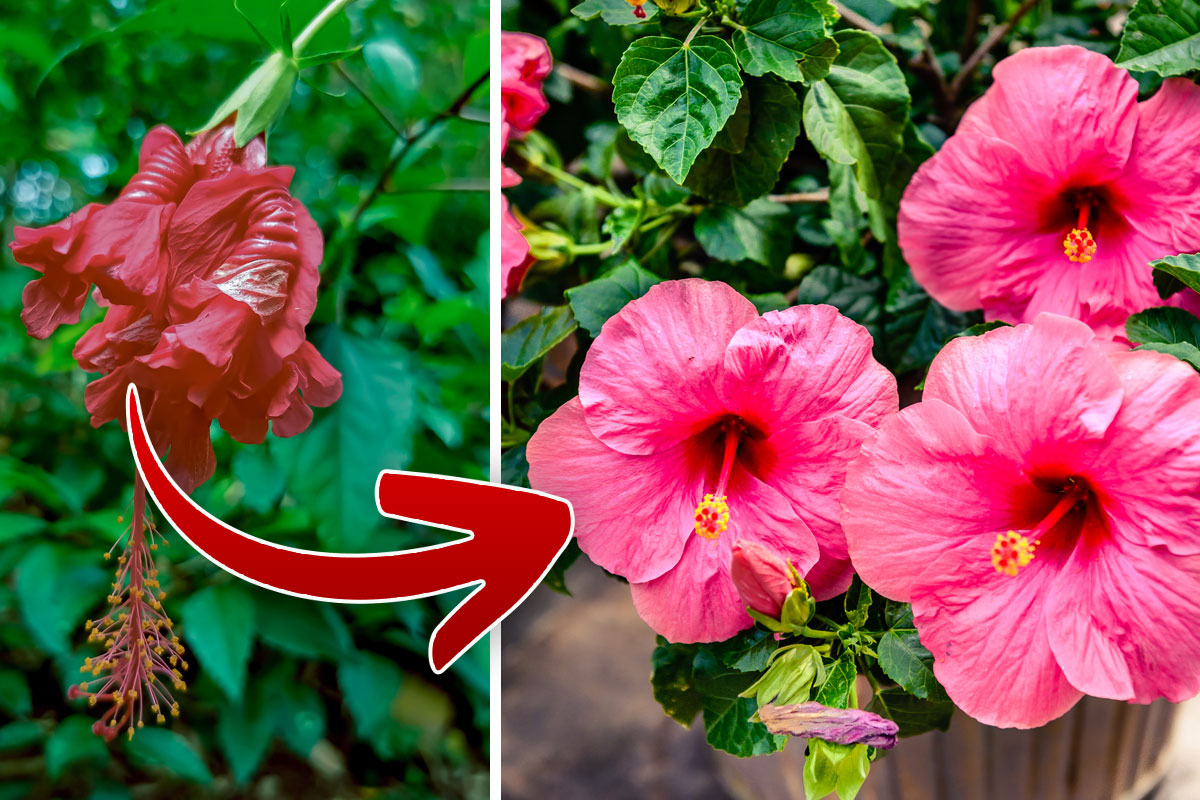
The hibiscus is a stunning plant that is native to subtropical and tropical regions, and is revered for its large, brightly colored blooms.
So, when your hibiscus fails to produce flowers, it can leave you feeling frustrated and at a loss for what could be wrong.
While no one wants a hibiscus that doesn’t bloom, this is a tell-tale sign that something is wrong with your plant.
Hibiscus Needs Sunlight
Hibiscuses are sun-loving plants that need full sun to produce their fragrant blooms. If your plant is growing in a shady location, consider relocating it to an area where it can receive at least 6 hours of full sun every day. Not only will shade prevent the plant from flowering, but it can also stunt growth and cause stress.
If you cannot relocate it, try to cut back vegetation that may be blocking the hibiscus from receiving the vital sunlight.
Wrong Climate
Hibiscuses are divided into two different categories: tropical and hardy. Tropical hibiscuses are not cold hardy and can be severely damaged and killed due to frost and freezing temperatures. They are hardy in USDA Hardiness Zones 9 to 11 where the winters are not too cold. The hardy hibiscus, however, can tolerate colder weather and can flower for a longer period of time than their tropical counterparts. If your hibiscuses are not flowering, check to see which category it falls under, since you may have the wrong plant for your climate.
Lack of Water
Not receiving enough water due to little or no rain can result in drought stress, which can prevent the hibiscus from flowering. During periods where the plant may not receive adequate rainfall, supplement the rain with a water hose.
Drought stress is not only caused by under-watering, it can also be caused by growing in soil that cannot properly retain moisture. Sandy and rocky soils drain too fast, which means the hibiscus’ roots cannot suck up the moisture. The good news is that you can improve the soil compensation by incorporating compost into the soil under and around the hibiscus.
Attacked by Pests and Diseases
When the hibiscus is dealing with pests and diseases, such as spider mites, mealy bugs, thrips, aphids, or rot, it can put stress on the plant. This stress takes a toll on the hibiscus, preventing it from flowering. That is why it is important to regularly examine the plant looking for signs of problems and then acting quickly to correct them.
Most insects that attack the hibiscus can be dealt with by using insecticidal soap or neem oil. Both of which are non-toxic and the safer option over traditional pesticides. Keep in mind, however, that insecticidal soap can harm beneficial insects when first applied to the plant. However, once dried, insecticidal soap won’t harm those good bugs, such as pollinators.
Improper Amounts of Nutrients
Not receiving the proper amounts of nutrients can leave your hibiscus without any blooms. This could be too much of one type of nutrient or not enough. To help avoid this, apply a well-balanced fertilizer with an even ration of NPK.
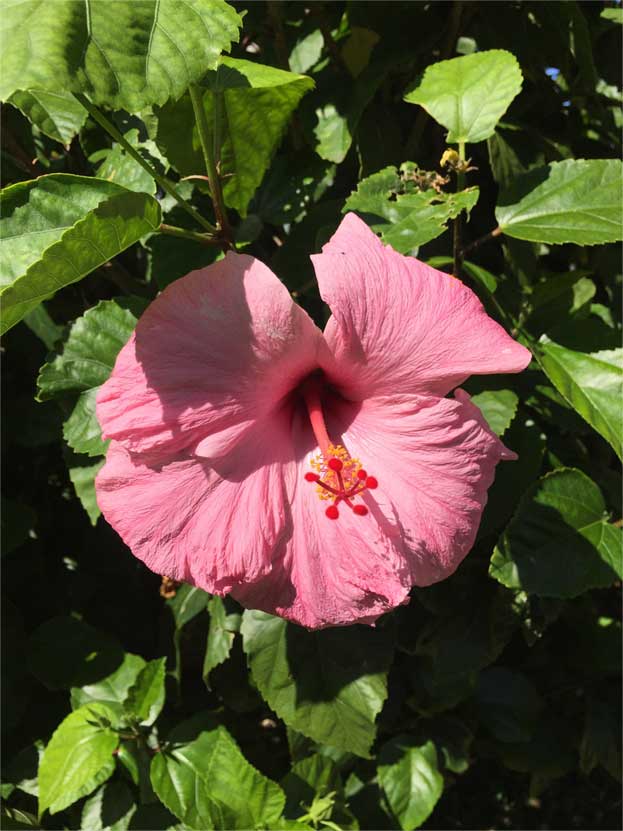
According to the University of Minnesota Extension, use a fertilizer with a 20-20-20 or 10-10-10 NPK ration to feed the plant.
Pruning at the Wrong Time
Pruning a hibiscus can help prevent it from becoming too unmanageable, while also providing much needed air circulation to the plant. Unfortunately, if you prune at the wrong time, you could prevent flowers from forming.
Hibiscuses flower on new years growth, so pruning the plant during its growing season can quickly stop flowers from appearing. Instead, wait and prune the plant until the end of its growing season, which is typically in the months of September and October.
Waiting until after flowering to prune helps promote new growth for the coming spring and increases flower production.
Related Articles





